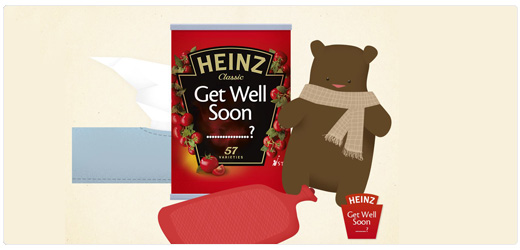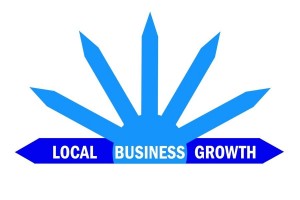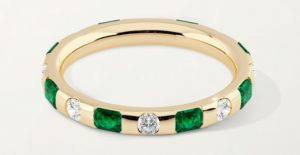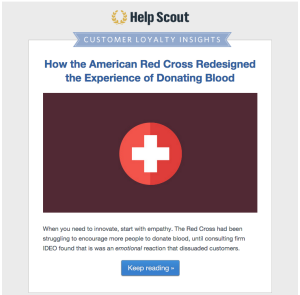If brands want to get the very best out of social media at some point they will have to embrace the art of storytelling. This is a key aspect of a brand’s survival on platforms as diverse as Pinterest and Twitter, Facebook and LinkedIn. Get storytelling right and you will find that more people sign up to your story, your brand.
But what is visual storytelling? Well, we will look at the question first, and then we’ll dive right into seven brands that are nailing it with social storytelling, companies that understand what the concept means, and how best to apply it. The results can be electrifying.
Social storytelling can be about taking information that is boring or perhaps just a little dull and making it feel important, impassioned and relevant. So let’s take the idea of someone marketing a car that is pretty much the same kind of saloon car as the one that everyone else has driven for years. A company that sells this car may focus on a few features and benefits for a while before it becomes obvious that people aren’t really buying into that kind of behaviour. But if it tells a story behind the car, makes it feel real, exciting and somehow more compelling, there is much more meat on the bone. Brands that tell stories and excite audiences in this way see a huge return on their investment, as customers start to feel involved, and more likely to buy.

Stories have a narrative structure that our brain follows very easily. This narrative structure is something that we see every day. Think about how you talk to your colleagues at work, and how your anecdote becomes something that leads them onto an ending. You telling a story is powerful because it has excitement and tension built in (even if you are just talking about last night’s TV). The human brain loves it, and waits to the end if it is done well enough.
Take any powerful brand today that is using storytelling and you will see that the ideas and concepts it conveys in it’s storytelling marketing make the audience feel something. They feel an emotion, and anyone who has spent even ten minutes on a course about advertising will know that emotions sell, pure and simple.
The more emotional we feel about a product, the less likely we are going to feel cynical. And cynicism needs to be stripped away before we are ready to buy.
So are you ready for some good examples of storytelling? Here we go …
Dove and the Men thing
Dove sells soap, that stuff we use every day and that arguably has absolutely no story behind it whatsoever. Seriously. Soap?
But Dove doesn’t care about what other people think. A couple of years ago, the company decided to include men in it’s frankly quite awesome storytelling approach to marketing. For years now Dove has focused on real people and their stories, specifically women who are ‘real’, as in not supermodels. This focus has meant that women have identified with, liked and followed the company all over the Web. They feel cared for by Dove, and recognised as being worthy of feeling beautiful. This has all been done by telling stories about beauty, whether it’s the beauty of a mother and daughter relationship or the beauty of a face and body that is generally viewed as being ‘average’.

All of this has been freed up by a focus on real people. This campaign went even further, and told a real, compelling story about a father simply wishing to see his child. It works because we have a story here, a video that tells us about something that stirs up emotions (remember what we said about emotions earlier). And it links those emotions to the healing, reuniting power of soap.
To understand this, understand that Dove sells soap that it feels takes care of the people who use it. It is simple soap that helps you look after your skin. Link that idea to a dad coming home from service to see his child, and you have a compelling story.
If you’re a brand and you engineer happiness with your product, show how you do this. Tap into the emotions you create, and then use that insight in your content. Dove has done it well, and they’ve kept it very simple at the same time.
Check it out here:
TOMS Shoes: a story that resonates with everyone
TOMS shoes make shoes. Now, we aren’t struggling with this as much as we would have done (initially) with soap. Shoes can tell a story because they are part of a journey every single day. So there’s mileage there.
In April 2011 the founder of the company asked everyone to go barefoot for a day. This mushroomed into the One Day Without Shoes campaign that is now an annual event, and has made TOMS shoes a bit of an icon. But the whole thing is done through the kind of storytelling that simply means something to everyone. You can’t fail to be touched by the central ideas behind the story: children in poorer countries need shoes to stay alive.
Basically, shoes were given out, lots of them. Every time a customer purchased a pair, TOMS donated a pair to a needy child. This had tremendous impact and sets up the kind of storytelling that other brands would kill to have. But the good heart behind the idea really helped to make sure that central message stayed clear.

And then TOMS took it even further and changed things up a little. This year, every photo of bare feet that was tagged by anyone as part of the newest campaign, meant that a free pair of shoes was given to a child who needed them. There was no purchase required, just the tagging of bare feet on Instagram photos.
You can check out what happened on their website here.
This works on so many levels but the basic idea of trying to help those less fortunate than yourself is a powerful and compelling thing. It’s a story. Emotions are stirred because people don’t like to see others in dire need. With this campaign, the emotions were all about caring, a mixture of sadness and hope. People wanted to get involved and were happy to know that when they chose to buy the shoes this showed they cared. TOMS pulled it up a step when they made it ‘no purchase necessary’ for two weeks.
The result? A brand that has a story to tell, and a brand that told it well.
For your brand it’s important to have principles, an approach to your business that is also an approach to life. TOMS don’t want to sell shoes here, they want to help make lives better. How can you show your principles?
Heinz
You all know Heinz, right? Makers of all sorts of food products but perhaps best known for soup. The company really plugged into the warm emotion vibe with their storytelling campaign of a few months back. Facebook has a huge reach, and is perfect for the kind of brand that has an ‘everyman’ feel to it. Heinz, in other words. Everyone likes soup.
Heinz tapped into that huge reach by developing a campaign that encouraged fans on Facebook to buy a can of ‘Get well Soon’ soup. This is personalized soup basically, with a label that allows fans to buy soup that is truly personal, and taps into the emotions that are there when anyone we love is not well.
So far then, Heinz is helping us to help those we love, family and friends basically. It’s a story, and it grows on you immediately. For centuries, soup has been used to help people feel better or even just cared for.
Then Heinz added even more to the storytelling mix by ensuring that each can bought would result in a £1 donation to Starlight, a charity for young children who are terminally ill.

Massive emotions were therefore attached to the campaign, and the chance to do even more good by purchasing a can that already makes us feel that we are caring for others.
Telling a story is one thing, but telling a story that suddenly becomes personal for the customer is something else entirely. Look at your brand and see how you can pull in the most important people, those who buy your products.
Airbnb
A rather massive brand that has taken the world by storm settles into an amazingly powerful bit of storytelling, and shows the rest of the world how it’s done. Airbnb felt that telling a story that was simply inspirational was surely the best way to get people feeling emotions and buying into the brand it had created. And it worked.
A wonderfully smart and cool animation, “Wall and Chain” tied immediately into the international, ‘be anywhere’ feel the company has worked hard to create. What’s more, the story at the heat of the animation is about as real and as recent as you could ever want. Anyone who watches the animation will be hit by the simplicity of the ideas at the heart of it. It’s about connection, family, and being a global citizen.
It’s compelling stuff. And what makes it even more effective is that it’s delivered with such simple animation. Capable of being watched anywhere on any device (not always true for videos), it tells a strong and instantly memorable story. And the emotions that pour out of it are phenomenal.

You wouldn’t think Airbnb would fit into this kind of storytelling. The brand is powerful, but this is human stuff, and internationally relevant. A powerful piece of storytelling that uses social media and the viral effect perfectly.
Make your brand story (ethos, message) part of a bigger thing and focus on how the one key message can be universally conveyed. It ties in with what you do and makes you more powerful, more relevant.
Land Rover: The Vanishing Game
When we think of Land Rover we often think of quality along a slightly boring outlook on life. Not necessarily sexy when it is marketing, the company would perhaps have to think outside the box a little before it truly got the social media storytelling thing taken care of. Which is exactly what it did.
Land Rover created the ultimate storytelling experience by telling a story. It’s interactive, and it’s brilliant, detailing a kind of road trip around Britain through text, imagery and other aspects of media. The links helped to fire the plot, and now and then ‘readers’ are treated to some images of Land Rovers doing Land Rover stuff. It is a truly epic experience because it is actually telling a story that feels genuine and well-written.
There are a few reasons why this particular type of digital storytelling really works well. First of all, there really is a story here in the most literal sense. Secondly, the brand is about adventure so it ties in neatly with an adventure story.

In other words, prospects and anyone who had ever owned a Land Rover will quickly identify with the narrative. And that’s exactly what the company wants to happen. Bring in the emotions of excitement and not a little fear, and you have a rollercoaster designed to market a brand.
Tell a story. Literally. And use your platforms to enrich it. As the emotions start to flow, make sure your brand name is front and centre.
HTC: Happy Telephone Company
HTC have used Robert Downey Jr in ads very effectively here, but it’s not just about him and his star power in this incredibly effective YouTube skit. A long and developed piece at about two minutes, it is one of the most effective pieces of social media storytelling that has been released in years. And it trades in on one key emotion: excitement.
You want to find out what happens next, basically. The ad is full of rich visual imagery, has the charismatic Downey Jr in it throughout, and uses the company letters to full effect continuously. You are simply not allowed to avoid the HTC thing, and it is done with such panache and charm that we forgive HTC for essentially hitting us over the head with a sledgehammer.
But then you realise that this is just very effective storytelling. The setup is pure narrative. A rich corporate type comes to deliver ‘subversive thinking’ (literally deliver) and then we are taken through the subversive thinking world of a brand that details a compelling and frankly enjoyable story.

There are characters (larger than life, sure), plot developments in the way the brand goes on it’s own journey towards subversiveness, and a twist ending that tells us, quite simply, that HTC is really just a cheeky and, well, subversive company in the way it has delivered the ad itself.
It’s incredibly clever, and it’s also shot with a strong cinematic feel.
Google: Telling a story, literally
Google don’t really have to market anymore, they are simply working on ways to keep their fans happy. And this video is a perfect version of that.
An extremely popular video with nearly 100,000 likes, it works on a variety of levels, but the biggest thing here is that it tells a compelling and moving story from the very first second. You could be watching a movie, with a rich narrative and a clear pull towards the final payoff. We would rather let you watch it yourself, but the fact is that the video is smart, clever, and simply tells you how the search engine can change lives that have been affected by seemingly earth-shattering events.
Sometimes the best stories can only be told by video, and this is the perfect example.

These storytelling examples are clever, carefully planned and full of key aspects that play on our emotions. For a brand that wants to do this kind of thing, remember that storytelling is about being the story in the end, whether this is the cheekiness of HTC, or the soap that makes magical things happen.
Digital & Social Articles on Business 2 Community(130)
Report Post







